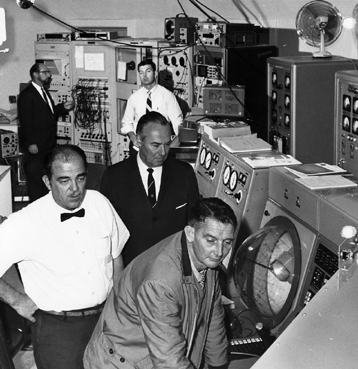The round trip light travel time of more than two seconds is apparent in all the real-time recordings of the lunar audio, but this does not always appear as expected. There may also be some documentary films where the delay has been edited out. Reasons for editing the audio may be time constraints or in the interest of clarity.
Claims that the delays were only half a second are untrue, as examination of the original recordings shows. Also, there should not be a consistent time delay between every response, as the conversation is being recorded at one end – Mission Control. Responses from Mission Control could be heard without any delay, as the recording is being made at the same time that Houston receives the transmission from the Moon.
However, five hours before transmission they were told to stand down.
The timing of the first moonwalk was changed after the landing. In fact, delays in getting the moonwalk started meant that Parkes did cover almost the entire Apollo 11 moonwalk.

Personnel in the Parkes control room. L-R (rear): George Kropp, William Reytar L-R (front): Robert Taylor (NASA Operations Manager), Wilson Hunter (NASA representative in Australia), John Bolton (Director, Parkes Observatory)
While that was the original plan, and, according to some sources, the official policy, the Australian Broadcasting Commission (ABC) did take the transmission direct from the Parkes and Honeysuckle Creek radio telescopes. These were converted to NTSC television at Paddington, in Sydney. This meant that Australian viewers saw the moonwalk several seconds before the rest of the world.[138] See also Parkes radio astronomer John Sarkissian's article, "On Eagle's Wings: The Parkes Observatory's Support of the Apollo 11 Mission"[139] The events surrounding the Parkes Observatory's role in relaying the live television of the moonwalk were portrayed in a slightly fictionalized Australian film comedy "The Dish" (2000).
This is not supported by the detailed evidence and logs from the missions.